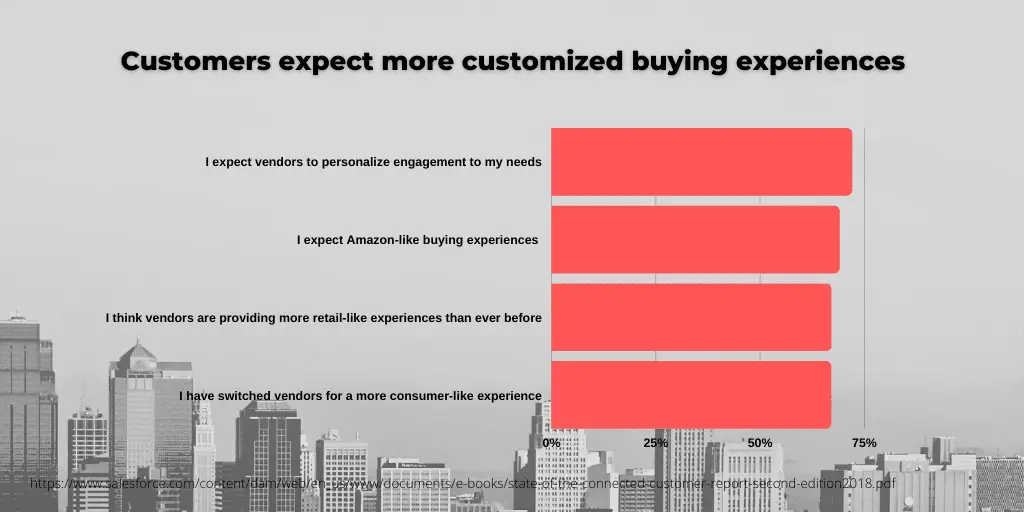

As digital technologies become an organic part of our lives, we observe the stronger call for patient-centricity in the healthcare industry. The approach to modern customer, be it a doctor or anyone else, should be more personalized. That’s a good thing because patients are getting more involved in the treatment process, while pharma brands increase customer engagement and gain extra points. That is why omnichannel patient-centricity became an integral part of modern patient care providing an inclusive approach that helps to get better treatment outcomes and engage patients into active communication with healthcare providers.
How disconnected communication spills pharma budgets
There is much talk of patient centricity, but the rare patient has experienced this approach. Sometimes companies have the misconception they know what their patients need and treat them right. It often results in poor patient care, dancing around issues that aren’t based on actual patient needs. Every year, pharma spend vast sums on patient care when desired outcomes are not achieved. This is the consequence of disconnected communication with patients. One of its side effects is poor medication adherence.
Approximately 50% of people with chronic diseases don’t take medications as prescribed. About 50% of patients stop taking a new medication after only 6 months. These huge numbers result in treatment failure and extra spending for both pharma companies and patients. The New England Healthcare Institute estimated that medication non-adherence is responsible for $290 billion in “otherwise avoidable medical spending” in the US alone each year.
It also leads to loss of brand loyalty among the patients who feel like the X brand has failed to meet their expectations. The reason behind poor medication adherence starts with simple forgetfulness, although, in the majority of cases, the gaps in day-to-day interaction between patients and pharma brands are to blame.
How omnichannel technologies improve the quality of patients care
The modern healthcare approach is not about medications selling, it revolves around customization of disease management. The statistic is quite clear, 84% of all customers say it is very important for companies to treat them as a person, not a number, to win their business.
That’s why pharma brands are going after omnichannel experiences meant to express genuine concern for patients’ health and engage them in the healthcare journey across multiple communication channels. Omnichannel empowers patient-centricity driven by productive communication tools.

The omnichannel journey starts with the identification of pain points to map the patient journey and define the engagement strategy that says, “we root for your success”. This is important because 61% percent of customers say a commitment to their success or satisfaction strengthens their loyalty.
The optimal channel mix supports your message and provides value measured by successful treatment outcomes and overall patient satisfaction.
In summary, omnichannel stimulates interaction where one channel complements the other ones and thereby improves patient outcomes and provider performance.
The case proving that omnichannel works
When it comes to timely medication for patients with chronic diseases, it turns into vital day-to-day activity. A good example of how omnichannel improves a provider’s performance is increased patient adherence. We had the opportunity to prove the performance-enhancing potential of the omnichannel approach in our real-world case.
The brief summary:
TOP 50 pharmaceutical giant was interested in our assistance and technical expertise when building an elaborate journey for their patients with chronic diseases.
Our task:
- Introduce technologies encouraging patients to complete the course of treatment to maintain the level of positive outcomes, and reduce healthcare costs.
- Build a comprehensive IT infrastructure with the integration of additional marketing communications services
- Nurture brand loyal patients by bridging the gaps in communication between the patient and the healthcare provider.
- Analyze patient behavior trends to define barriers to timely medication, as well as what can motivate them along the way.
Steps to a successful strategy implementation
Our team of experts has been engaged in the development of a full-fledged customer journey for patients suffering from chronic diseases. The process consisted of several important steps. When it comes to a treatment adherence program, it is worth to consider all possible scenarios of patients behavior. As far as early identification of patient needs leads to more customized patient experience, segmentation was among the first steps to take. It gave us a profound understanding of patients’ needs, data about their behavioral trends, and barriers preventing them from timely medication.
The optimal mix of channels consisting of major and additional communication channels was chosen for always-relevant engagement. Integration of channels has paved our way for personalized interaction providing interconnection with the content transmitted between them. As a result, patients enjoyed timely and always targeted delivery of individualized content through preferred communication channels.
Based on all the steps, we were able to develop a deliberate architecture integrating all channels into an omnichannel approach and activating the customer journey chain build on various scenarios of patient behavior.
Factors such as level of commitment and motivational triggers were taken into account to dose patient support wisely.
Outcomes:
- The communication program increased the adherence of patients with heart disease by 2.8 months.
- The adherence of patients with diabetes increased by 4.1 months.
Conclusion:
Patient centricity provides a degree of empathy to close gaps in day-to-day communication between patient and healthcare provider. It helps to achieve the best possible health outcomes and lower health care costs to both parties. The introduction of an omnichannel approach on the way towards modern healthcare management is vital, and its role in daily patient care cannot be underestimated.
To learn more about the power of omnichannel to build a holistic communication with the customer, download a free copy of our Case Study with a detailed description of the real-world case.
The post How Omnichannel Technologies Increase Patient Adherence appeared first on Viseven.
